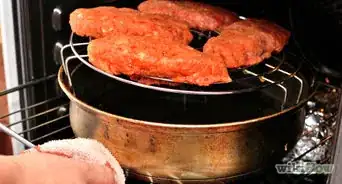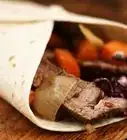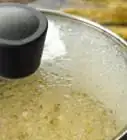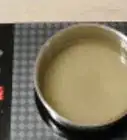wikiHow is a “wiki,” similar to Wikipedia, which means that many of our articles are co-written by multiple authors. To create this article, volunteer authors worked to edit and improve it over time.
wikiHow marks an article as reader-approved once it receives enough positive feedback. In this case, 93% of readers who voted found the article helpful, earning it our reader-approved status.
This article has been viewed 83,554 times.
Learn more...
Freekeh is an ancient Middle Eastern grain made from roasted green wheat. The grain has become more popular lately since it is quite high in dietary fiber and has a low glycemic index. Freekeh is a delicious and healthy treat when prepared the right way, and done you're certain to keep the recipe for your recipe book.
Ingredients
Basic Freekeh
Makes 2 to 4 servings
- 2 to 2 1/2 cups (500 to 625 ml) water
- 1 cup (250 ml) freekeh
- 1/2 tsp (2.5 ml) salt
- 1/2 Tbsp (7.5 ml) olive oil
Makes 2 to 4 servings
- 2 medium onions, sliced
- 1 oz (30 g) butter
- 1 Tbsp (15 ml) olive oil
- 6 cups (150 g) freekeh
- 1/4 tsp (1.25 ml) ground cinnamon
- 1/4 tsp (1.25 ml) ground allspice
- 1 cup (250 ml) vegetable stock or broth
- 3.75 oz (100 g) Greek yogurt
- 1.5 tsp (7.5 ml) lemon juice
- 1/2 garlic clove, crushed
- 1 Tbsp (10 g) fresh parsley, finely chopped
- 1 Tbsp (10 g) fresh mint, finely chopped
- 1 Tbsp (10 g) fresh coriander, finely chopped
- 2 Tbsp (30 ml) pine nuts, toasted and roughly chopped
- Salt and ground black pepper, to taste
Makes 2 to 4 servings
- 2 cups (500 ml) cooked freekeh
- 1/4 cup (60 ml) olive oil
- 1 Tbsp (15 ml) lemon juice
- 1/4 cup (60 ml) fresh flat-leaf parsley, finely chopped
- 2 Tbsp (30 ml) fresh mint, finely chopped
- 1/4 cup (60 ml) fresh basil, finely chopped
- 3 green onions, chopped into small pieces
- 3 Roma or plum tomatoes, diced
- Salt and ground black pepper, to taste
Steps
Microwave Cooking
-
1Combine the ingredients in a microwave-safe bowl. Place 2 cups (500 ml) of boiling water, 1 cup (250 ml) freekeh, 1/2 tsp (2.5 ml) salt, and 1/2 Tbsp (7.5 ml) olive oil in a deep, glass or plastic microwave-safe bowl.
- Mix slightly to moisten all the freekeh granules and to spread the salt and oil.
- You can use either cracked grain freekeh or whole grain freekeh. Either option will work.
- To boil the water, fill a tea kettle or small saucepan with water and heat it on the stove over high heat until bubbles start to form.
- Alternatively, you can boil the water by placing it in a separate microwave-safe dish and microwaving it in 30 to 60 second intervals until bubbles start to form. Place wooden chopsticks in the water to break the surface tension as you microwave it, thereby preventing the water from super-heating and breaking the dish.
-
2Cook on high. Cover the dish and cook the freekeh on high until most of the water is absorbed. For cracked grain freekeh, this will take 10 to 15 minutes. For whole grain freekeh, this will take 30 to 35 minutes.
- If your microwave does not rotate, pause the microwave one to three times during the process to turn the dish manually. Doing so can ensure that the freekeh cooks evenly.
Advertisement -
3Let stand. After the cooking process finishes, remove the dish from the microwave and let the freekeh stand, undisturbed and still covered, for about 5 minutes.
- The grains of freekeh should absorb the remaining water during this time, causing them to plump up and soften even more.
-
4Serve. At this point, the freekeh is ready to serve. You can enjoy it as is or use it in a recipe for another dish calling for pre-cooked freekeh.
Stovetop Cooking
-
1Combine the ingredients in a saucepan. Add 2 1/2 cups (625 ml) cold water, 1 cup (250 ml) freekeh, 1/2 tsp (2.5 ml) salt, and 1/2 Tbsp (7.5 ml) olive oil to a medium or large saucepan.
- Mix slightly to spread the salt and olive oil and moisten all the grains of freekeh.
- You can use cracked grain or whole grain. The latter takes longer to cook, but either one will work.
- Make sure that the saucepan has a lid.
- The contents of the saucepan should take up half to three-quarters of the total volume. If the pan is much fuller than that, the water might boil over.
- Make sure that you use cool to cold water. Cool water will heat more evenly, so the grains of freekeh will cook more evenly, as well.
- Note that if the instructions on your box or bag of freekeh differ, it is advisable to use the instructions provided on the container rather than these.
-
2Bring to a boil over medium-high heat. Use a mixing spoon to stir the contents of the saucepan occasionally as they come up to temperature. Once the liquid starts to boil, cover the pan with its lid.
- The lid is necessary because it traps the steam inside. This prevents the water from evaporating, leaving it nowhere to go but into the grains of freekeh.
-
3Let simmer. Lower the heat to low or medium-low and let the grains simmer until the grains become tender. For cracked grain freekeh, this should take about 10 to 15 minutes. For whole grain freekeh, this should take 40 to 45 minutes.
- Stir the grains periodically during the process to promote even cook and limit the amount getting stuck to the pan.
- Stir the grains once more at the end of the process to make sure that all of the water has been absorbed and that the grains are adequately tender.
-
4Serve. The freekeh should be ready to serve now. You can enjoy it as a side dish as is, or you can opt to use it in another dish that calls for pre-cooked freekeh.
Freekeh Pilaf
-
1Sauté the onions. Place the butter and olive oil in a large, heavy saucepan and warm them on the stove over medium heat. Add the sliced onions once the butter melts and Sauté until soft and brown.[1]
- Sliced onion will take about 15 to 20 minutes to cook. You will need to stir the onions occasionally to prevent them from burning or sticking to the pan.
- If you want to distribute the onion flavor more evenly throughout the dish, you could use chopped onion instead of onion slices. Note that chopped onions will only take 7 to 12 minutes to cook.
-
2Soak the freekeh in cold water. Place the uncooked freekeh grains in a medium bowl and fill the bowl with cold water. Let soak for 5 minutes.
- It is recommended that you do this while the onions are cooking to minimize the amount of time it takes to prepare the dish overall.
-
3Drain the freekeh. Pour the freekeh and water through a sieve and rinse well under cold, running water. Let drain completely.
- The purpose of soaking, draining, rinsing, and re-draining is to help clean the grains.
- Make sure that the holes in the sieve are very small to prevent the loss of grains.
-
4Add the freekeh and spices to the onion. Toss the freekeh, cinnamon, and allspice into the saucepan with the onions. Stir well to combine.
-
5Add the stock, salt, and pepper. Pour the vegetable stock into the saucepan and sprinkle with a pinch each of salt and black pepper. Stir to mix and bring to a boil.
- Stir the contents of the saucepan periodically as they reach a boiling point to prevent uneven cooking.
-
6Simmer for 15 minutes. Once the liquid begins to boil, reduce the heat to low and let it all simmer gently for 15 minutes.
- Cover the saucepan as the freekeh cooks to avoid losing water through evaporation. Losing too much water can cause the freekeh to be hard and undercooked.
-
7Let stand. Once the freekeh seems tender, remove the saucepan from the stove and let it stand for 5 minutes covered and 5 more minutes uncovered.
- Letting the freekeh stand while covered allows the grains to finish absorbing the water.
- Letting it stand uncovered lets the freekeh cool down slightly.
-
8Mix the yogurt, lemon juice, and garlic. In a small, separate bowl, whisk together the three ingredients until smooth and evenly distributed.
- Add a sprinkle of salt, if desired, to draw out more of the flavors.
- Save time by doing this step as you wait for the freekeh to cool.
-
9Stir the herbs into the pilaf. Once the pilaf is warm instead of hot, stir in the parsley, mint, and coriander until evenly distributed throughout the pilaf.
- Taste the pilaf and adjust the seasonings as needed.
-
10Serve with yogurt and pine nuts. Scoop the freekeh pilaf into individual serving dishes and garnish each portion with a spoonful of the yogurt mix. Garnish with pine nuts.
- The pine nuts accentuate the nutty flavor of the freekeh.
- You can also garnish with additional parsley or a drizzle of olive oil.
Freekeh Tabouleh
-
1Toss the cooked freekeh with oil and lemon juice. Combine 2 cups (500 ml) cooked freekeh with 1/4 cup (60 ml) olive oil and 1 Tbsp (15 ml) lemon juice. Toss well to evenly coat all the grains in the oil and lemon juice.[2]
- Before starting this recipe, the freekeh should already be cooked using the microwave or stovetop method described in this article. Make sure that it is drained well and somewhat cooled so that it is no longer steaming hot.
- You will need about 1 cup (250 ml) uncooked freekeh for this recipe.
-
2Stir in the herbs and green onion. Add the chopped parsley, mint, basil, and green onions to the freekeh. Use a mixing spoon to stir these ingredients in, distributing them evenly throughout the dish.
-
3Add the tomatoes. Combine the tomatoes with the freekeh and other ingredients in your mixing bowl. Toss well to mix.
- At this point, you should also season the tabouleh with salt and pepper, to taste. Toss well after your initial addition, taste, and add more as needed.
- You can add more herbs if desired, as well.
-
4Let stand. Loosely cover the dish and let it sit out at room temperature for 30 minutes.
- This step will cause the flavors to combine better. It will also give the salad a chance to cool to room temperature.
- If you want this dish to be served cold, you can also let it stand in the refrigerator.
-
5Serve. Spoon servings into individual serving dishes and enjoy. Add more salt and pepper, if desired.
Community Q&A
-
QuestionHow long does cooked freekeh generally last in the fridge?
 Community AnswerWhole freekeh takes some time to cook, but it keeps well and reheats beautifully. So when you cook freekeh, make a large batch. Let it cool completely, and refrigerate it in an airtight container for up to five days.
Community AnswerWhole freekeh takes some time to cook, but it keeps well and reheats beautifully. So when you cook freekeh, make a large batch. Let it cool completely, and refrigerate it in an airtight container for up to five days. -
Question1 cup uncooked freekeh = how many cups cooked?
 Community AnswerCooked with two cups of water, the final result will be three cups.
Community AnswerCooked with two cups of water, the final result will be three cups.
Things You'll Need
- Microwave-safe dish or medium to large saucepan
- Mixing spoon
- Sieve
- Mixing bowl
- Whisk
- Serving dishes
References
About This Article
To cook freekeh on a stovetop, start by adding 2 1/2 cups of cold water, 1 cup of freekeh, and some salt and olive oil to a saucepan. Then, bring everything to a boil over medium-high heat, and cover the pan. Finally, reduce the heat to medium-low, and let everything simmer for 10-15 minutes if you're cooking cracked grain freekeh or 40-45 minutes if you're cooking whole grain freekeh. To learn how to cook freekeh in a microwave, keep reading!



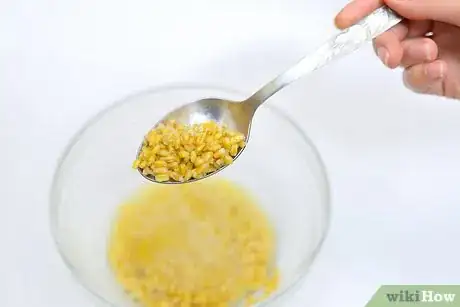




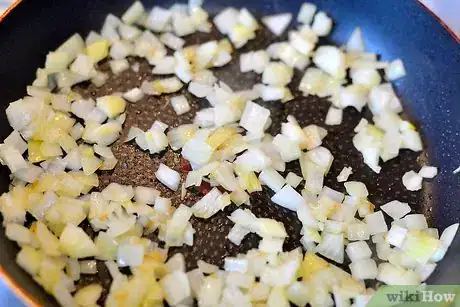
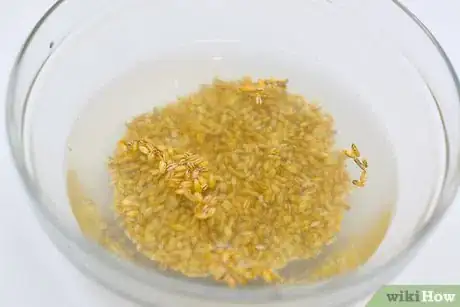





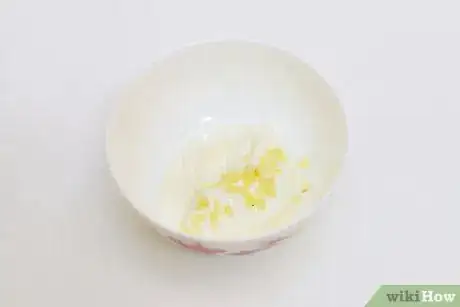



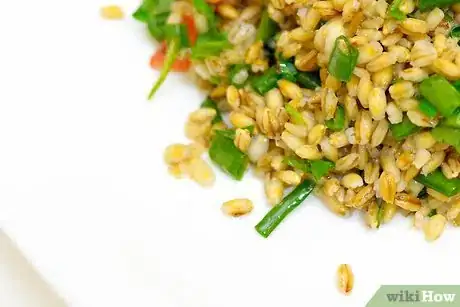



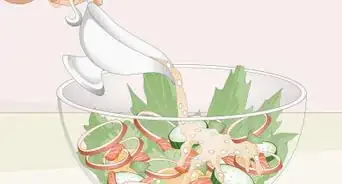
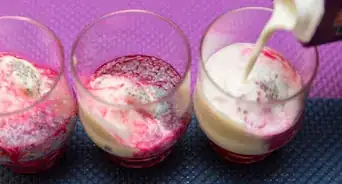
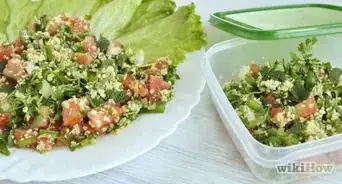
-Step-6.webp)
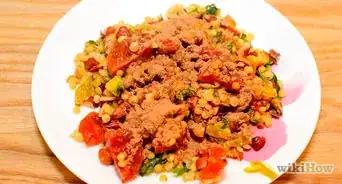
-Intro.webp)
